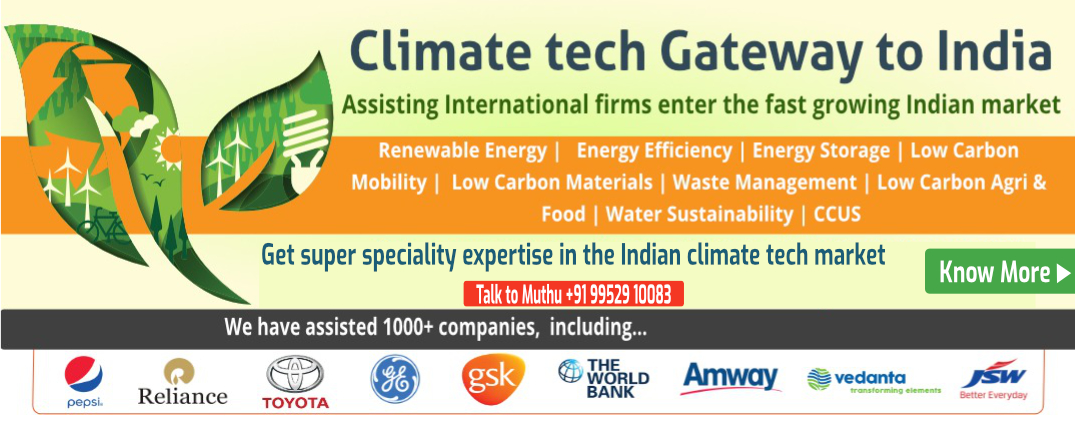This post is a part of Climate G2I Intelligence series from Energy Alternatives India (EAI), India’s leading climate-tech consulting firm.
G2I stands for Gateway 2 India, and provides comprehensive market intelligence and go-to market assistance for International firms entering the Indian climate-tech market. More about Climate G2I from here
Vestas, a global leader in wind energy technology, has recently secured a significant 130 MW turbine order from Vibrant Energy in India. This development reflects the burgeoning wind energy sector in India and highlights the increasing opportunities for international companies to enter this lucrative market. However, to maximize success in this complex environment, strategic partnerships with local experts are essential.
India holds the fourth-largest installed wind power capacity in the world, boasting around 41.93 GW, which comprises approximately 35% of the country’s total renewable energy capacity. Government support through policies like Generation-Based Incentives and a push towards cost-effective solutions have made it an attractive market. With ambitious goals to reach 140 GW of wind energy capacity by 2030, India’s commitment to a clean energy future positions wind energy as a crucial component of its energy transition.
While the potential is immense, India’s wind energy sector presents a unique set of complexities. G2I steps in as an expert guide, helping companies navigate evolving regulations, regional variations in resources and demand, and complex bureaucratic systems. With in-depth market intelligence, G2I identifies emerging trends, potential obstacles, and the most lucrative opportunities tailored to each client.
Net Zero by Narsi
Insights and interactions on climate action by Narasimhan Santhanam, Director - EAI
View full playlistThe Indian wind energy sector fosters dynamic alliances, like the recently formed Wind Alliance India (WAI), a collaboration between Denmark and India. Such partnerships focus on innovation, knowledge sharing, and offshore wind exploration. Other influential collaborations include the India-USA Strategic Clean Energy Partnership and IRENA’s partnership with India. These collaborations drive technological advancements, facilitate investment, and promote knowledge exchange.
Key policies such as Accelerated Depreciation, Renewable Purchase Obligations, and competitive bidding processes have greatly incentivized wind power development, making India an increasingly cost-competitive market for renewable energy.
While India has made significant strides in indigenizing its wind energy sector, with a current manufacturing capacity of 10-12 GW annually, further developing domestic capabilities remains a focal point. This necessitates technological advancement in turbine efficiency and the local production of critical components. The Indian government’s ‘Make in India’ initiative fuels this growth, encouraging local innovation.
This post is a part of Climate G2I Intelligence series from Energy Alternatives India (EAI), India’s leading climate-tech consulting firm.
G2I stands for Gateway 2 India, and provides comprehensive market intelligence and go-to market assistance for International firms entering the Indian climate-tech market. More about Climate G2I from here





 Our specialty focus areas include
Our specialty focus areas include



